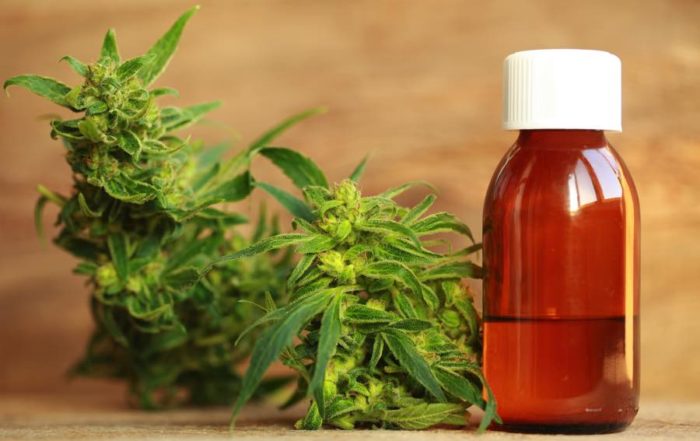The Endocannabinoid System, Cannabis And You
Maybe you remember the “Just Say No” anti-drug campaign from the 1980s and 1990s. One of its most famous advertisements goes like this.
A man stands in a kitchen. He holding a metal frying pan and an egg and says:
“This is your brain; this is drugs.”
He then fries the egg, and says:
“This is your brain on drugs! Any questions?”
Education-Based Drug Awareness
People, patients, and physicians need access to real information so that they can make informed decisions about the medicine they choose. I’m here to assist and serve that need.
Inaccurate fear campaigning and anti-drug propaganda is one of the main reasons I feel the need to educate people about cannabis.
I want to show you that it really is a safe and effective medicine. It can even replace many of the dangerous and toxic medications in traditional medicine.
This article is dedicated to the casualties of the failed “War on Drugs”. I’m going to show you what your brain is really like on cannabis.
Consider it an educated response to fear-based anti-drug campaigns. First, let’s learn a little about our brain and body.

The Nervous System
Our bodies are equipped with incredibly specialized systems that regulate functions related to health and wellness. The heart beats, lungs breath, all automated. Walking and speaking, we process our experience and respond to our environment using our nervous system.
The central nervous system consists of the brain and spinal cord. The brain is kind of like a control tower that sends signals, or instructions through neurons and nerve fibers. The peripheral nervous system essentially extends into the arms, legs, and inner organs.
The nervous system allows you to move your body by controlling muscles, consciously or not. It carries messages between organs and muscles acting as a communications highway between your brain and your body.
The Immune System
The Immune System is an amazing defence system that we’re born with and develops as we grow. It’s made up of a network of cells, tissues, and organs that work to protect us. An underactive, or overactive immune system will severely compromise health.
This masterfully complicated system neutralizes and removes harmful toxins and pathogens that make us sick, including:
- Bacteria
- Viruses
- Parasites
- Fungi
- Environmental toxins
- Genetically mutated cancerous cells
The adaptive immune system learns to defend against constantly changing pathogens. It’s able to store memories of how it successfully responded to pathogens previously encountered.
The human body also comes equipped with an innate immune system, which mostly fights off bacterial infections. In the event of injury or infection, our immune system mounts a quick response to protect the body.
Inflammation is one of the immune system’s main responses to danger and damage. Pain, swelling, heat, and redness are usually the result of an acute injury, but inflammation should normally disappear soon afterward.
Sometimes though, the immune responses don’t shut off when they should. When the immune system is overactive, or acts abnormally, it can cause havoc on the body. Conditions such as asthma, Crohn’s disease, fibromyalgia, and arthritis are considered to be autoimmune diseases.
The Endocannabinoid System
The godfather of all modern cannabis research and the first to isolate and identify THC, Raphael Mechoulam, is cited saying:
“ By using a plant that has been around for thousands of years, we discovered a new physiological system of immense importance. We wouldn’t have been able to get there if we had not looked at the plant.”
He’s referring to the discovery of the endocannabinoid system aptly named after the cannabis plant.
The endogenous cannabinoid system is perhaps the most important physiologic system involved in establishing and maintaining human health. It consists of specialized receptor cells and endogenous substances that bind together, such as anandamide.
Endocannabinoid Receptors
The system’s receptors, CB1, CB2, etc., are found throughout the brain and body. The first cannabinoid receptor, CB1, is localized primarily to the nervous system. It’s expressed on nerve cells in certain regions of the brain and on some peripheral organs and tissues, including:
- Cerebellum
- Basal Ganglia,
- Hippocampus
- GI and urinary tracts
- Spleen
- White blood cells
- Endocrine glands
- Spinal Cord
The receptor CB2 is mainly found expressed on the immune system and peripheral nervous system. They are typically localized in the body in places such as:
- Gut
- Spleen
- Liver
- Heart
- Reproductive organs
- Kidneys
- Bones
- Blood Vessels
- Lymph Cells
- Endocrine Glands
All Systems Go
Health is a delicate balancing act achieved by a collective effort from all of the body’s systems. Activity of the endocannabinoid system (ECS) is directly related to this balance.
It has the ability to attenuate the nervous system and the immune system, making it an extremely vital part of our health.
Research suggests that the ECS facilitates communications between the nervous and immune systems. In the brain, cannabinoids play an extremely important role in regulating functions such as appetite, mood, behavior, stress-response, and anxiety.
If health were a tightrope walker, the endocannabinoid system would be the stick used to keep balance. It keeps us from falling off of the tightrope of homeostasis and into the disease and disorder below.
How Can Cannabis Treat So Many Different Conditions?
In its resinous flowers, the female cannabis plant produces cannabinoids, like THC and CBD. It also produces terpenes, which are aromatic compounds that play a vital role in cannabis medicines.
To learn more about terpenes and cannabinoids, read my article on the entourage effect .
Cannabinoids from plants, or phytocannabinoids, directly affect the endocannabinoid system. THC typically binds more with CB1 receptors in the brain affecting pain perception, psyche, and circulatory processes. CBD, or cannabidiol, has an incredibly interesting social life, as it binds together many more receptors than previously believed.
CBD is of great interest to the medical community because it can actually bind together other types of receptors, beyond the ECS. Here are some key understandings about CBD pharmacology being explored by researchers:
- High doses of CBD activate the 5-HT1A-serotonin receptor affecting biological and neurological processes of anxiety, addiction, appetite, sleep, pain perception, and more.
- CBD binds to TRPV1 receptors , an ion channel responsible for mediating pain perception, inflammation, and body temperature.
- CBD activates PPA receptors . PPAR activity degrades amyloid-beta and Tau protein build-ups in the brain, which are key molecules linked to the development of Alzheimer’s disease.
- CBD , and CBG , can actually counter or reduce the psychotropic effects of THC . This allows patients to receive analgesic benefits of THC without having the euphoric or dyshporic effect.
-
CBD can block or inhibit receptors, like
GPR55
,
A1A
, and
A2A
, or enhance binding affinity of receptors such as
GABA-A
. These activities may be responsible for the affect of cannabis on:
- Blood pressure
- Bone density
- Cancer cell proliferation
- Tumor regression
- Inflammation
- Neuro-protection
- Seizures
- Tremors
- Insomnia
- PTSD
- Anxiety
- Sedation
- Stress Response
- Muscle Spasms
- Depression
- Mood

Conclusion
The pharmacology and metabolic pathways of cannabis compounds is still a complex topic. The medical community is begging for further research into the medicinal potential of cannabinoid compounds.
We are leaving the prohibition-era of marijuana behind, and returning to a medical perspective of the plant. Patients, people, and physicians all need access to evidence-based information on cannabis.
I’m no doctor, but I know cannabis. I know that it has a plethora of valuable medicinal applications. I also know that we need more rigorous and serious studies into the long-term effects of cannabis medicine.
Learn More About Cannabis
This article is just a basic insight into understanding how cannabis medicine works in the body.
I encourage you to read my other articles to learn more about cannabis as a medicine, and how it can work in treating anxiety , and what to look for in quality CBD oil .
Have you ever used cannabis medicine?
Did you know cannabis could be used to treat so many different types of medical conditions and illnesses?
Join the discussion by sharing your thoughts, experiences, and stories in the comments section below.






thank you, very much for stepping up to the plate. I had no idea that what you have written about, until reading your article
jack